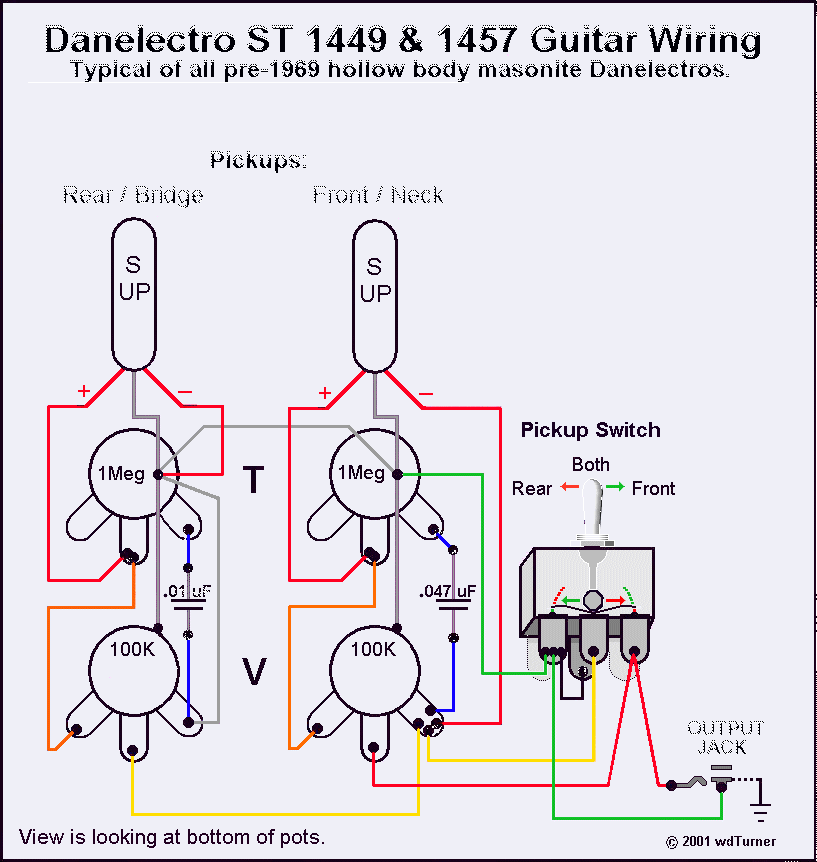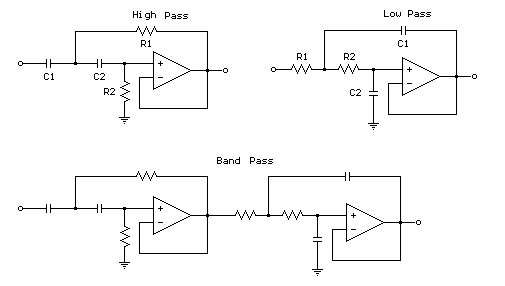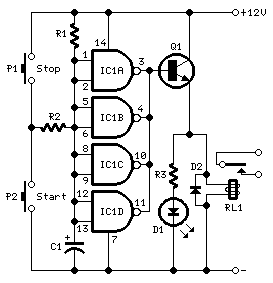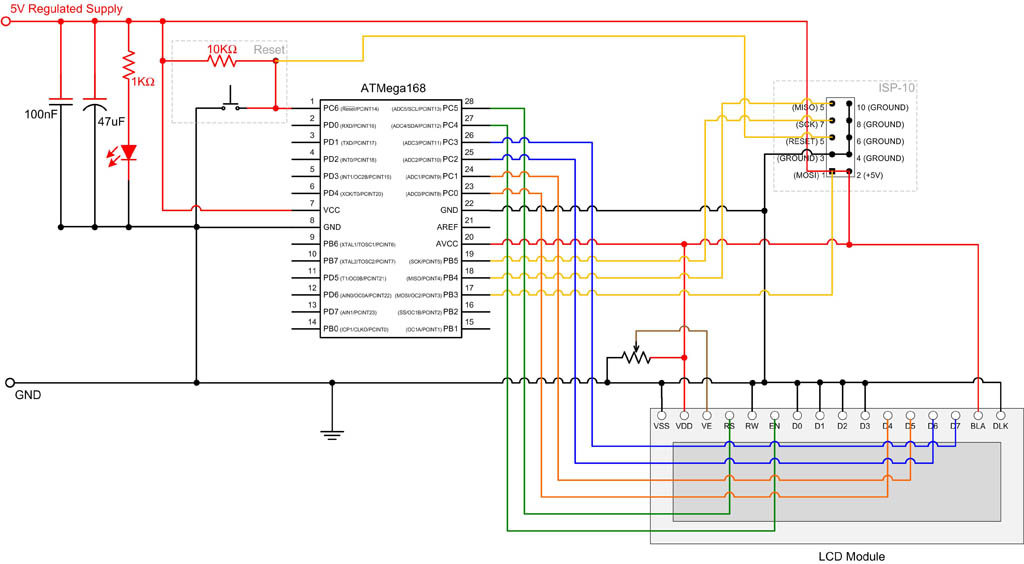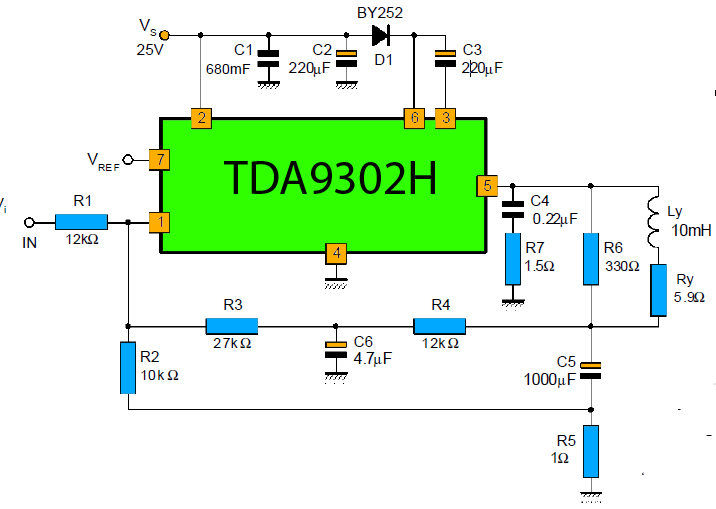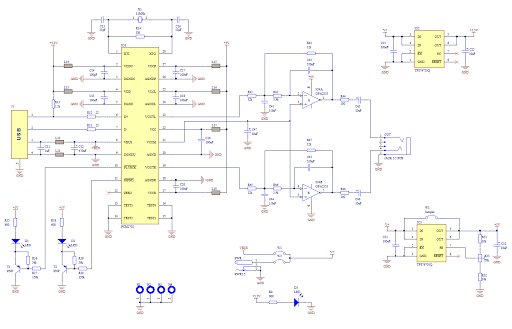
Reading Schematics
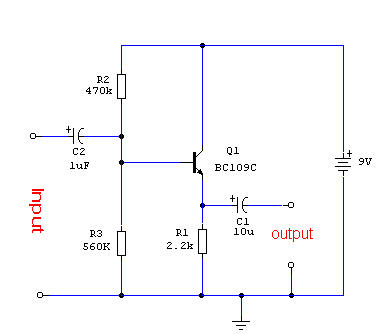
This document was created to address the numerous inquiries received about how to read a schematic. Learning to interpret a schematic diagram is akin to map reading; it requires understanding which wires connect to which components and identifying the start and end points of each wire. In map terms, this is similar to knowing the origin and destination points and the roads connecting them. However, schematics are more complex, as components must be identified, and some have polarity requirements (they must be connected in the correct orientation to function). Understanding the circuit's operation is not necessary for reading it, but accurate interpretation of the schematic is essential. Basic rules can assist in reading a diagram. In the provided circuit diagram, blue lines represent wires labeled A, B, and C. There are three components, making it simple to identify the start and end of each wire and their connections. Wire A connects to the switch and the battery's negative terminal, wire B connects to the switch and the lamp, and wire C connects the lamp to the positive terminal of the battery, ensuring the circuit functions correctly. It is crucial to note that any schematic can be drawn in various ways. Figures 1 and 2 illustrate two electrically equivalent lamp dimmer circuits. Although they may appear different, tracing the wires reveals that each wire starts and ends at the same components in both diagrams. The components and the three terminals of the transistor are labeled. In Figure 1, two wire junctions are marked with a dot. A wire connects from the battery's positive terminal to the collector (C) terminal of the transistor, and another wire runs from the collector terminal to one end of the potentiometer, VR1. The wires could connect at the transistor collector, battery positive, or one end of the potentiometer; the essential requirement is that both wires exist. Similarly, a wire connects from the battery's negative terminal to the lamp, and another connects from the lamp to the other end of VR1. These wires could also connect at the battery's negative terminal, the lamp, or the opposite terminal of VR1. In Figure 1, the wires could have been drawn from the lamp and the bottom terminal of VR1 back to the battery's negative terminal, with the dot placed there, and it would still represent the same circuit. In Figure 2, one wire junction appears at the negative battery terminal, and another junction is located similarly. The arrangement of a circuit can sometimes affect its performance, particularly in high-frequency, radio, and some high-gain audio circuits. The audio circuit shown below has a voltage gain of less than one; hence, the wires to and from the transistor should be kept as short as possible to prevent interference from radio signals or mains hum from a transformer. Additionally, the input and output terminals are labeled, and a common reference point or earth is indicated. The earth terminal should connect to the chassis or metal framework of the enclosure housing the circuit. Many schematics include a chassis or earth point, which generally indicates the common reference terminal of the circuit. In radio applications, the earth symbol typically requires a physical connection to a cold water pipe or an earth spike buried in the soil.
Understanding and interpreting schematic diagrams is fundamental for anyone involved in electronics. A schematic serves as a visual representation of an electrical circuit, detailing how components are interconnected. Each symbol in the schematic corresponds to a specific component, such as resistors, capacitors, and transistors, while lines represent the conductive paths (wires) between these components.
In practice, schematic diagrams follow standardized symbols as defined by organizations such as the Institute of Electrical and Electronics Engineers (IEEE) and International Electrotechnical Commission (IEC). This standardization facilitates communication among engineers and technicians, allowing for a universal understanding of circuit designs.
When analyzing a schematic, it is crucial to identify the power source and the ground reference. The power source typically provides the necessary voltage for the circuit's operation, while the ground serves as a common return path for current. Proper grounding is vital for circuit stability and performance, especially in sensitive applications like audio and radio frequency circuits.
Moreover, attention should be paid to the polarity of components, particularly diodes and electrolytic capacitors, which must be connected correctly to avoid circuit failure. The orientation of these components is usually indicated in the schematic with symbols or markings.
In summary, a thorough understanding of schematic diagrams is essential for designing, troubleshooting, and modifying electronic circuits. By following established conventions and guidelines, engineers can effectively communicate complex ideas and ensure the reliable operation of electronic systems.This page was created in response to all the email I receive, on how to read a schematic. Learning to read a schematic diagram, is similar to map reading. You need to know which wires connect to which component and where each wire starts and finishes. With a map book this would be equivalent to knowing your origin and destination points and which roads connect to the motorway network, etc. However schematics are a little more complicated as components need to be identified and some are polarity conscious (must be wired up in the circuit the correct way round) in order to work. You do not need to understand what the circuit does, or how it works, in order to read it, but you do need to correctly interpret the schematic.
Here are some basic rules that will help with reading a diagram. Look at the circuit diagram shown below: The blue lines represent wires and for simplicity i have labeled them as A, B, C. There are just three components here and it is easy to see where each wire starts and ends, and which components a wire is connected to.
As long as the wire labelled A connects to the switch and negative terminal of the battery, wire B connects to the switch and lamp, and C connects to the lamp and the battery positive terminal then this circuit should work. Before moving on, it is important to realise that any schematic may be drawn in a number of different ways.
In Fig 1 and Fig 2 i have drawn two electrically equivalent lamp dimmer circuits, they may look very different, but in fact, if you mentally label the wires and trace them, you will see that in both diagrams each wire starts and finishes at the same components on both diagrams. The components have been labelled and so have the three terminals of the transistor. In Fig1 there are two wire junctions as indicated by a "dot". A wire cpnnects from battery positive to the C (collector) terminal of the transistor, and also a wire runs from the collector terminal to one end of the potentiometer, VR1.
The wires could be joined at the transistor collector, battery positive or even one end of the potentiometer, it does not matter, as long as both wires exist. Similarly, a wire runs from battery negative to the lamp, and also from lamp to the other end of VR1.
The wires could be joined at the negative terminal of the battery, the lamp, or the opposite tag of VR1. In drawing Fig 1, I could have drawn the wires from the lamp and bottom terminal of VR1 back to the battery negative terminal and placed the dot there, it would still be the same.
If you now look at Fig 2, you will see that one wire junction appears at the negative battery terminal, the other junction in a similar place. Sometimes the way a circuit is wired up may compromise its performance. This is particularly important for high frequency and radio circuits, and some high gain audio circuits.
See the diagram below: Although this audio circuit has a voltage gain of less than one, wires to and from the transistor, should be kept as short as possible. This will prevent a long wire picking up radio interfereance or mains hum from a transformer. Also, in this circuit input and output terminals have been labelled and a common reference point or earth is indicated.
The earth terminal would be connected to the chassis or metal framework of the enclosure in which this circuit is built. Many schematics contain a chassis or earth point. Generally its just to indicate the common reference terminal of the circuit, but in radio work, the earth symbol usually requires a physical connection to a cold water pipe or an earth spike buried in the soil.
🔗 External reference
Understanding and interpreting schematic diagrams is fundamental for anyone involved in electronics. A schematic serves as a visual representation of an electrical circuit, detailing how components are interconnected. Each symbol in the schematic corresponds to a specific component, such as resistors, capacitors, and transistors, while lines represent the conductive paths (wires) between these components.
In practice, schematic diagrams follow standardized symbols as defined by organizations such as the Institute of Electrical and Electronics Engineers (IEEE) and International Electrotechnical Commission (IEC). This standardization facilitates communication among engineers and technicians, allowing for a universal understanding of circuit designs.
When analyzing a schematic, it is crucial to identify the power source and the ground reference. The power source typically provides the necessary voltage for the circuit's operation, while the ground serves as a common return path for current. Proper grounding is vital for circuit stability and performance, especially in sensitive applications like audio and radio frequency circuits.
Moreover, attention should be paid to the polarity of components, particularly diodes and electrolytic capacitors, which must be connected correctly to avoid circuit failure. The orientation of these components is usually indicated in the schematic with symbols or markings.
In summary, a thorough understanding of schematic diagrams is essential for designing, troubleshooting, and modifying electronic circuits. By following established conventions and guidelines, engineers can effectively communicate complex ideas and ensure the reliable operation of electronic systems.This page was created in response to all the email I receive, on how to read a schematic. Learning to read a schematic diagram, is similar to map reading. You need to know which wires connect to which component and where each wire starts and finishes. With a map book this would be equivalent to knowing your origin and destination points and which roads connect to the motorway network, etc. However schematics are a little more complicated as components need to be identified and some are polarity conscious (must be wired up in the circuit the correct way round) in order to work. You do not need to understand what the circuit does, or how it works, in order to read it, but you do need to correctly interpret the schematic.
Here are some basic rules that will help with reading a diagram. Look at the circuit diagram shown below: The blue lines represent wires and for simplicity i have labeled them as A, B, C. There are just three components here and it is easy to see where each wire starts and ends, and which components a wire is connected to.
As long as the wire labelled A connects to the switch and negative terminal of the battery, wire B connects to the switch and lamp, and C connects to the lamp and the battery positive terminal then this circuit should work. Before moving on, it is important to realise that any schematic may be drawn in a number of different ways.
In Fig 1 and Fig 2 i have drawn two electrically equivalent lamp dimmer circuits, they may look very different, but in fact, if you mentally label the wires and trace them, you will see that in both diagrams each wire starts and finishes at the same components on both diagrams. The components have been labelled and so have the three terminals of the transistor. In Fig1 there are two wire junctions as indicated by a "dot". A wire cpnnects from battery positive to the C (collector) terminal of the transistor, and also a wire runs from the collector terminal to one end of the potentiometer, VR1.
The wires could be joined at the transistor collector, battery positive or even one end of the potentiometer, it does not matter, as long as both wires exist. Similarly, a wire runs from battery negative to the lamp, and also from lamp to the other end of VR1.
The wires could be joined at the negative terminal of the battery, the lamp, or the opposite tag of VR1. In drawing Fig 1, I could have drawn the wires from the lamp and bottom terminal of VR1 back to the battery negative terminal and placed the dot there, it would still be the same.
If you now look at Fig 2, you will see that one wire junction appears at the negative battery terminal, the other junction in a similar place. Sometimes the way a circuit is wired up may compromise its performance. This is particularly important for high frequency and radio circuits, and some high gain audio circuits.
See the diagram below: Although this audio circuit has a voltage gain of less than one, wires to and from the transistor, should be kept as short as possible. This will prevent a long wire picking up radio interfereance or mains hum from a transformer. Also, in this circuit input and output terminals have been labelled and a common reference point or earth is indicated.
The earth terminal would be connected to the chassis or metal framework of the enclosure in which this circuit is built. Many schematics contain a chassis or earth point. Generally its just to indicate the common reference terminal of the circuit, but in radio work, the earth symbol usually requires a physical connection to a cold water pipe or an earth spike buried in the soil.
🔗 External reference
